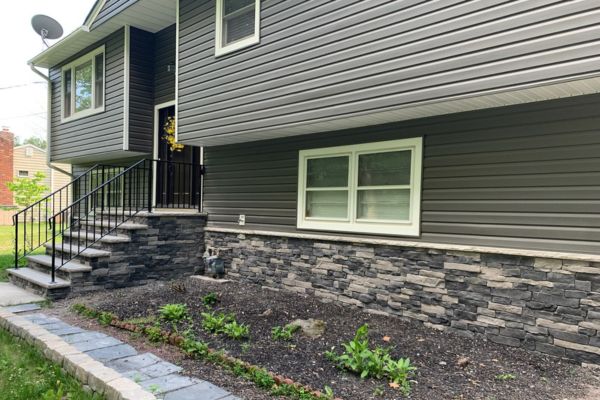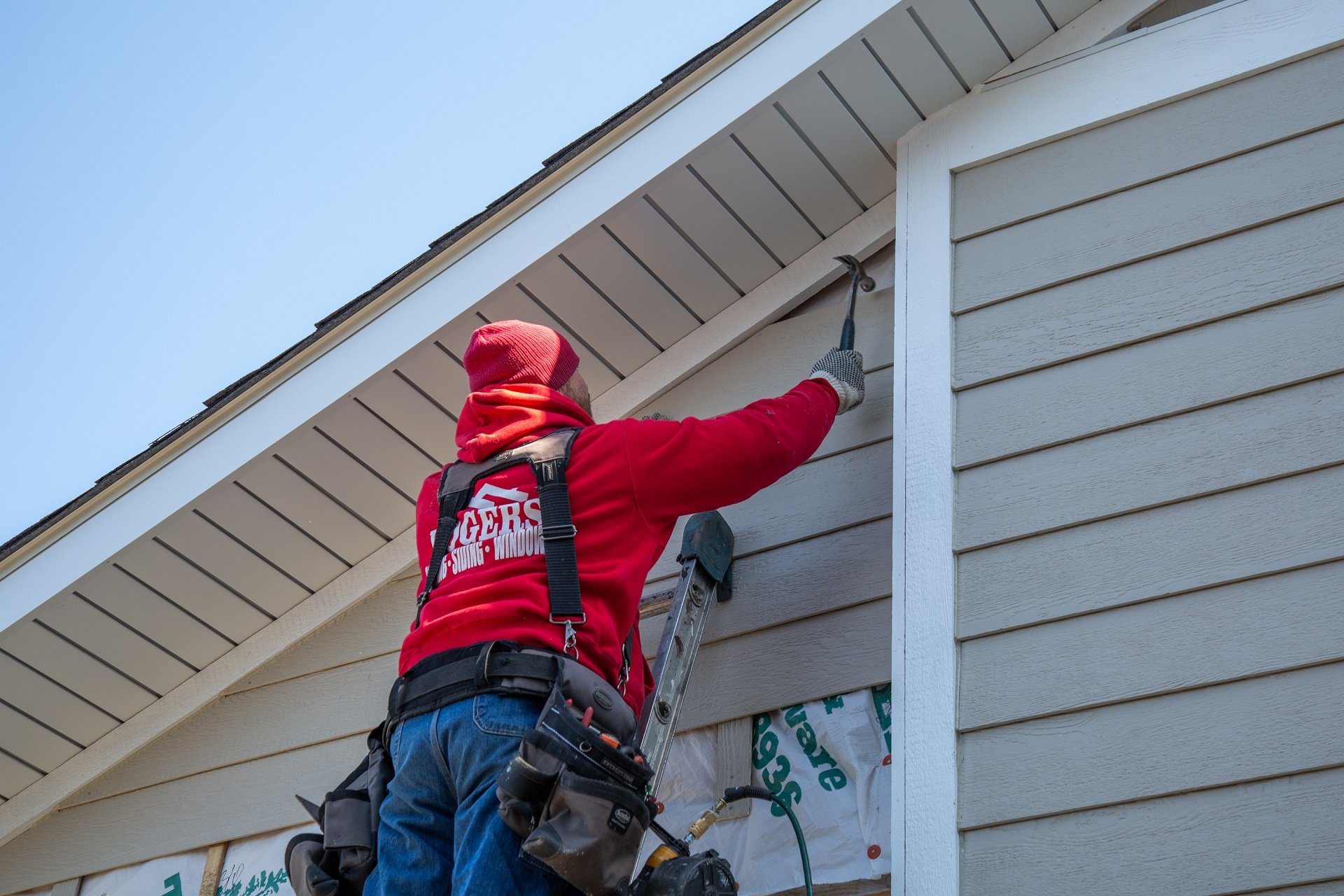Explore the Advantages of Exterior Sidings for Improved Power Efficiency and Aesthetic Worth
The combination of home sidings into domestic architecture offers notable benefits, specifically in improving power efficiency and aesthetic charm. By serving as an added obstacle versus warmth transfer, home sidings can considerably reduce power consumption, which not just benefits home owners monetarily but additionally adds to a more sustainable atmosphere.
Power Effectiveness Perks

One of one of the most significant advantages of installing exterior sidings is their contribution to energy effectiveness, which can result in substantial expense savings over time. Sidings serve as an extra layer of insulation for homes, decreasing warmth transfer during cooler months and decreasing warmth gain in warmer seasons. By effectively regulating indoor temperatures, home owners can decrease reliance on home heating and cooling down systems, ultimately lowering energy expenses.
Additionally, modern-day home siding materials are typically made with energy-efficient residential properties, such as reflective surfaces that help deflect sunshine. This feature not only contributes to an extra constant indoor climate but additionally minimizes the lots on cooling devices, improving their life expectancy and efficiency. Particular kinds of home sidings, consisting of protected plastic or fiber concrete, offer superior thermal resistance, additional improving a home's power performance.
Purchasing top quality siding can also positively influence a home's power ranking, making it a lot more eye-catching for possible buyers that prioritize eco-friendly attributes. morris siding contractor. Subsequently, the installment of energy-efficient house sidings is not merely a home improvement; it represents a critical choice that generates long-lasting economic and ecological benefits.
Visual Enhancements
Many homeowners discover that the aesthetic enhancements offered by sidings considerably raise the overall look of their residential properties. The introduction of new home siding can change a home's exterior, permitting it to mirror personal style and complement its environments. Whether choosing a traditional, modern, or eclectic design, home sidings supply a versatile canvas for innovative expression.

Additionally, the harmony and precision of modern-day siding products add to a cohesive and sleek exterior. This attention to detail not just elevates the value of the building but likewise promotes a welcoming atmosphere for visitors and passersby (morris siding contractor). Eventually, spending in quality home siding can cause a striking improvement that mirrors the property owner's preference while simultaneously raising the home's bankability

Siding Material Options
When thinking about the visual improvements that house siding can use, it is similarly crucial to review the numerous material alternatives available. The option of siding product substantially affects both the appearance and energy efficiency of a home. Common choices consist of vinyl, timber, fiber cement, and metal.
Vinyl house siding is preferred due to its price, reduced maintenance, and large range of shades and styles. It offers great insulation homes, contributing to power performance. Wood home siding, while cosmetically pleasing and eco-friendly, requires normal maintenance to avoid decay and pest damages.
Fiber cement home siding incorporates internet sturdiness with aesthetic versatility, mimicking the appearance of timber without the linked upkeep obstacles. It is immune to parasites and fire, making it a safe selection. On the various other hand, steel home siding, commonly made from light weight aluminum or steel, uses excellent durability and resistance to harsh climate conditions. It can be ended up in various colors and structures, improving its visual allure.
Ultimately, the option of exterior siding product must align with both aesthetic choices and energy performance goals, making certain an unified equilibrium in between type and function for any kind of household job.
Installation Effect
While the choice of siding product is important, the setup process considerably influences the general energy performance of a home. Appropriate setup makes certain that the home siding develops a limited barrier against air leaks, which is essential for preserving a secure indoor environment. Poor setup can lead to voids and spaces that permit air infiltration, leading to raised power consumption for home heating and air conditioning.
Furthermore, the placement and attachment of house siding panels directly impact their efficiency. As an example, inaccurately installed panels may warp or come to be displaced over time, jeopardizing their insulation homes. The installment procedure must consist of proper wetness administration techniques, such as the use of residence cover and correct flashing, to prevent water intrusion that can lead to mold and mildew growth and structural damage.
In addition, click this site hiring competent experts for installation can enhance energy efficiency. Experienced installers are more probable to stick to market best techniques, making certain that insulation and house siding job together effectively. Inevitably, purchasing top quality setup not only takes full advantage of the benefits of the house siding material but likewise contributes to decrease energy bills and a much more comfortable living setting for house owners.
Long-Term Value
Purchasing high-grade home siding not only improves a home's aesthetic charm but likewise delivers considerable long-term worth through enhanced energy performance. Quality exterior siding products, such as fiber cement or protected plastic, offer exceptional insulation, decreasing the demand for extreme cooling and heating. This energy performance translates right into reduced utility expenses, permitting homeowners to recover their first investment gradually.
In addition, top quality home siding is often much more long lasting than lower-grade choices, withstanding damages from climate, pests, and rot. This durability lessens the demand for constant repairs or replacements, additionally shielding the homeowner's investment. Numerous home siding alternatives additionally come with comprehensive guarantees, using satisfaction and minimizing future expenditures.
Thus, spending in high quality siding is not just an aesthetic decision; it is a calculated monetary move that pays rewards in energy financial savings, minimized maintenance prices, and enhanced residential or commercial property worth over the years. Eventually, the lasting benefits of high-quality house siding make it a wise financial investment for any type of homeowner.
Verdict
In summary, the benefits of home sidings prolong past simple appearances, significantly enhancing power effectiveness and overall residential or commercial property value. By lowering warmth transfer and providing insulation, sidings add to decrease power expenses and enhanced indoor environment control.
The assimilation of sidings right into household style uses noteworthy advantages, particularly in boosting power effectiveness and aesthetic allure. The selection of about his home siding material significantly influences both the appearance and power effectiveness of a home.While the option of siding product is vital, the setup process dramatically influences the general power performance of a home.Investing in high-quality house siding not just enhances a home's visual charm but additionally provides substantial lasting value via enhanced energy performance.In summary, the benefits of home sidings extend past mere appearances, dramatically enhancing power efficiency and total building value.